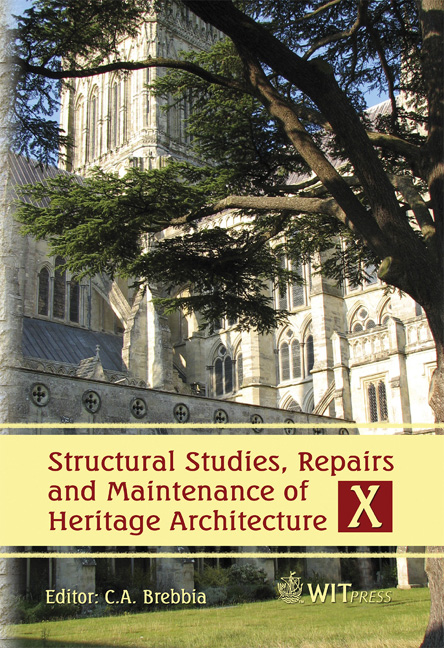Optimising Electrochemical Remediation For Historic Steel Framed Structures
Price
Free (open access)
Transaction
Volume
95
Pages
10
Published
2007
Size
1,109 kb
Paper DOI
10.2495/STR070331
Copyright
WIT Press
Author(s)
P. Lambert
Abstract
The problem of damage to historic steel framed structures as a result of corrosion is now widely recognised in Western Europe, America and Australia. Structures built in the late 19th or early 20th century are at greatest risk, together with earlier buildings that have received modifications or structural interventions during this period. Traditional methods of repair are often too intrusive and too expensive to consider. As a consequence a number of important structures are at risk of incurring extensive damage to their stone and faience finishes that may require replacement with new, non-original elements. Cathodic protection (CP) has been seen as a possible electrochemical solution to the problem of steel frame corrosion and has been in use in the UK and elsewhere for several years. In the absence of formal guidance and standards, most installations rely on the skill and experience of the designers and installers to ensure effective remediation. To assist in the development of such guidelines, the Royal Society has supported a four year research programme into the use of CP on historic structures, carried out at the Centre for Infrastructure Management at Sheffield Hallam University. This paper describes the completed study, its results and conclusions and shows how modelling of the processes has helped identify the key factors in the successful application of this technique to achieve maximum protection with minimum disruption to the original structure. Keywords: steel framed structures, metallic corrosion, numerical modelling, cathodic protection.
Keywords
steel framed structures, metallic corrosion, numerical modelling, cathodic protection.




